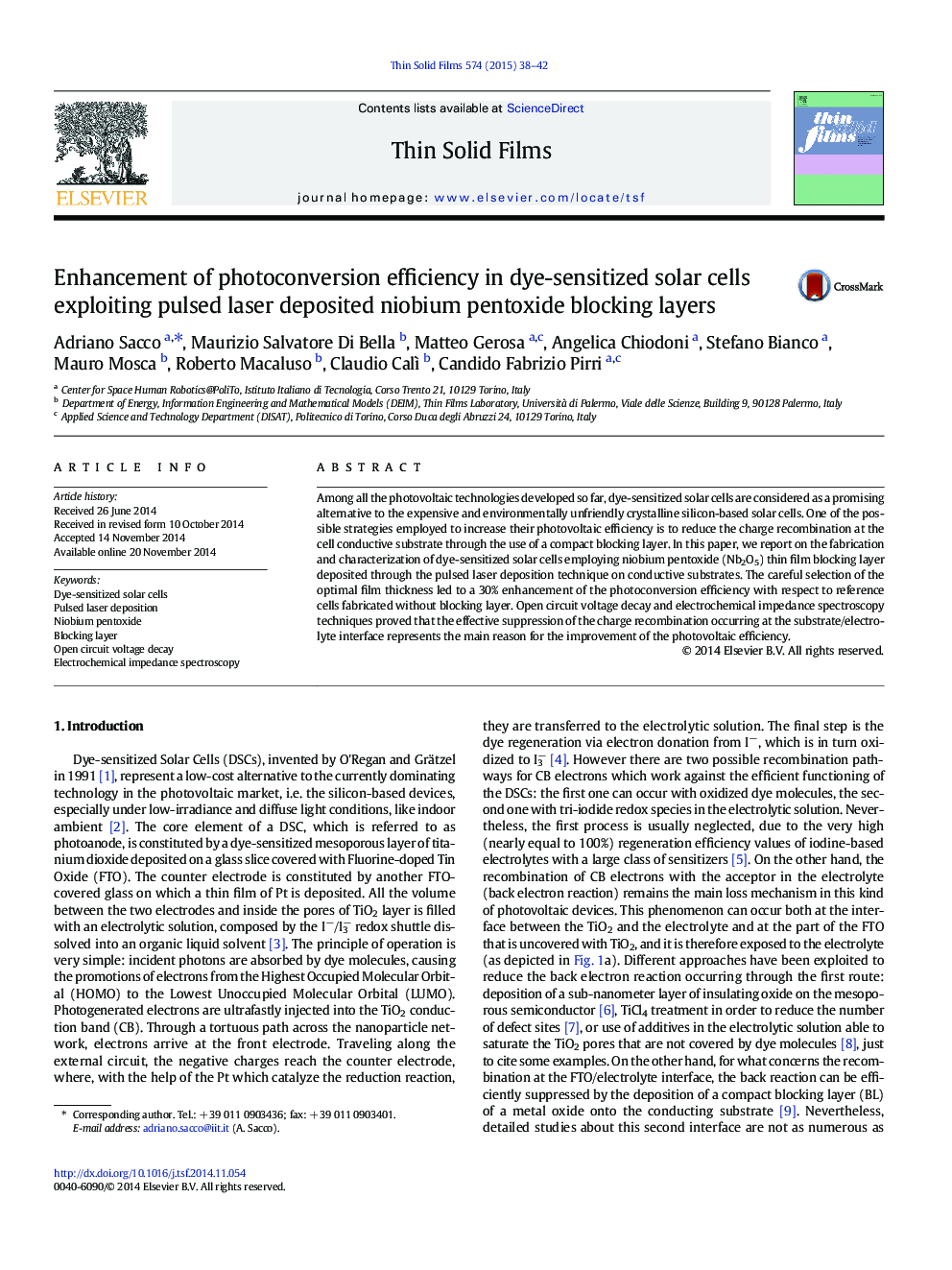| Article ID | Journal | Published Year | Pages | File Type |
|---|---|---|---|---|
| 8034743 | Thin Solid Films | 2015 | 5 Pages |
Abstract
Among all the photovoltaic technologies developed so far, dye-sensitized solar cells are considered as a promising alternative to the expensive and environmentally unfriendly crystalline silicon-based solar cells. One of the possible strategies employed to increase their photovoltaic efficiency is to reduce the charge recombination at the cell conductive substrate through the use of a compact blocking layer. In this paper, we report on the fabrication and characterization of dye-sensitized solar cells employing niobium pentoxide (Nb2O5) thin film blocking layer deposited through the pulsed laser deposition technique on conductive substrates. The careful selection of the optimal film thickness led to a 30% enhancement of the photoconversion efficiency with respect to reference cells fabricated without blocking layer. Open circuit voltage decay and electrochemical impedance spectroscopy techniques proved that the effective suppression of the charge recombination occurring at the substrate/electrolyte interface represents the main reason for the improvement of the photovoltaic efficiency.
Keywords
Related Topics
Physical Sciences and Engineering
Materials Science
Nanotechnology
Authors
Adriano Sacco, Maurizio Salvatore Di Bella, Matteo Gerosa, Angelica Chiodoni, Stefano Bianco, Mauro Mosca, Roberto Macaluso, Claudio Calì, Candido Fabrizio Pirri,
